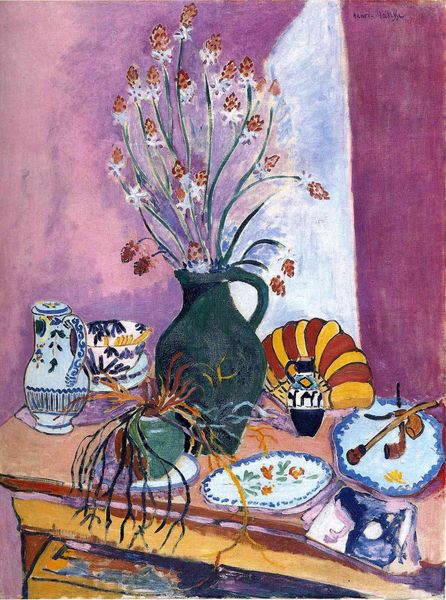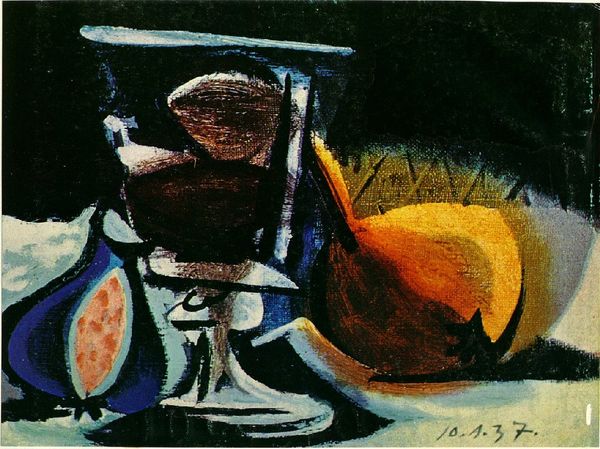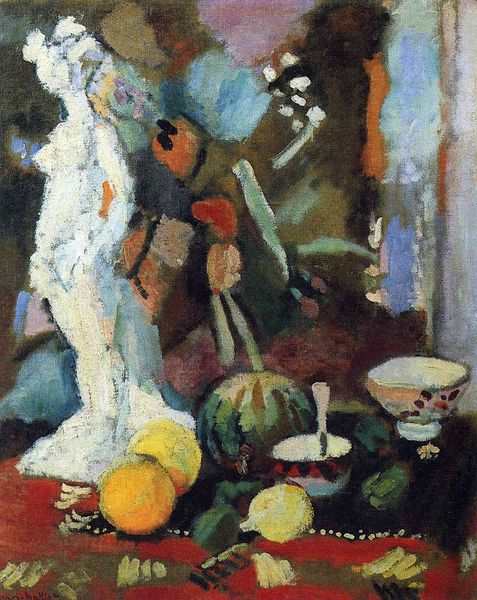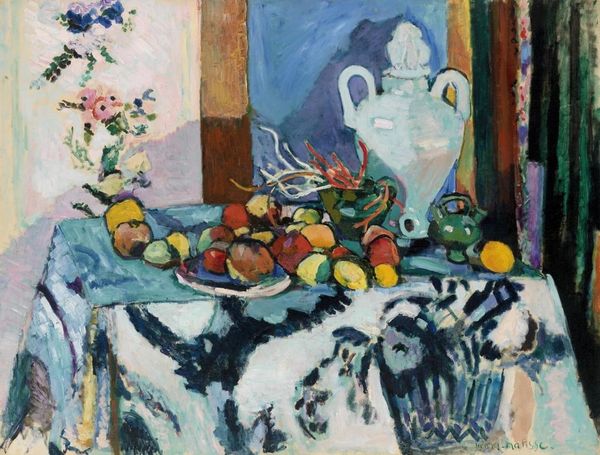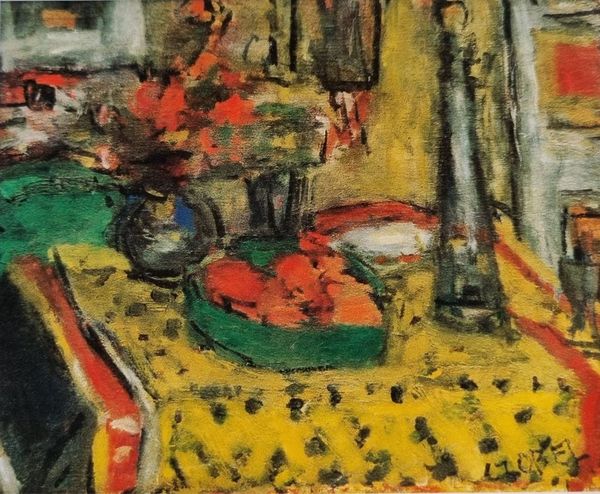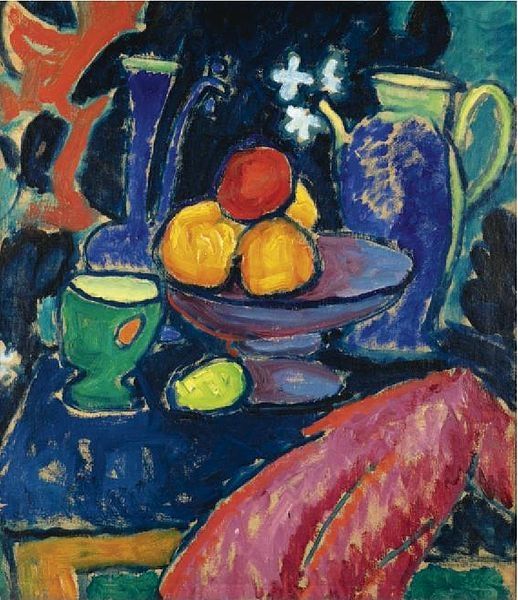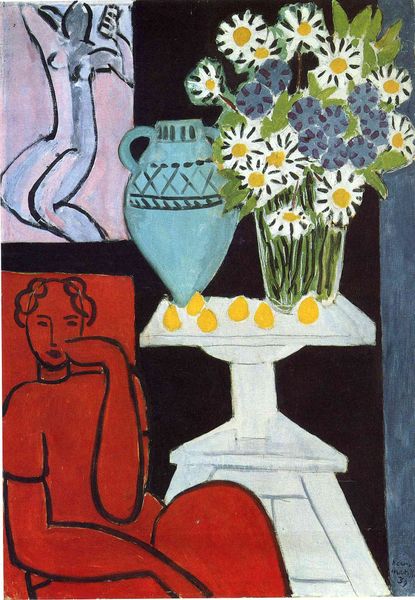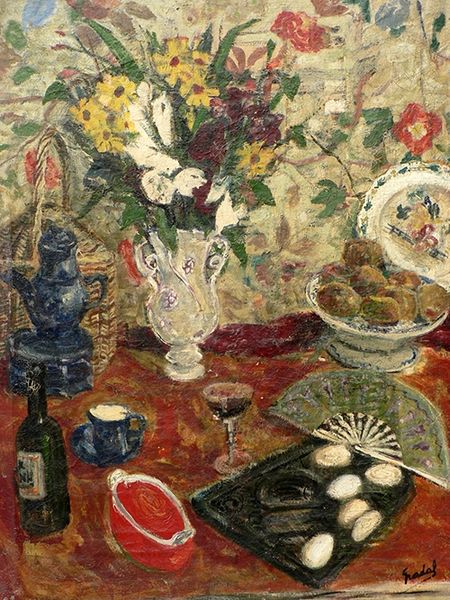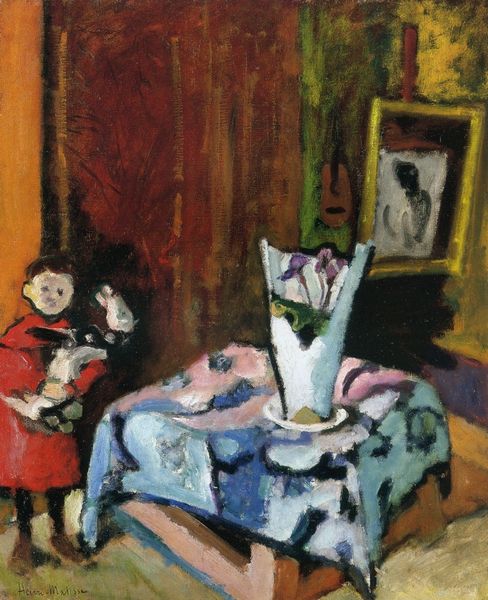
painting, oil-paint, photography
#
cubism
#
painting
#
oil-paint
#
flower
#
figuration
#
photography
#
fruit
#
geometric
#
orientalism
#
modernism
Dimensions: 27 x 41 cm
Copyright: Pablo Picasso,Fair Use
Curator: I must admit, this Picasso still life from 1936 leaves me rather cold at first glance. It’s called “Untitled,” oil on canvas. Sort of…blocky, wouldn't you say? Not the lyrical Picasso of, say, his blue period. Editor: Cold? Interesting. I see something simmering beneath the surface. It's true, it isn't the dreamy blues, but that's what makes it compelling. Those stark, almost violent brushstrokes, particularly in the dark vase...they speak volumes. Look how he renders the fruit; shapes competing, pushing. It reads as a disruption, a fracturing of domestic tranquility, in line with Europe on the brink. Curator: Disruption. I see what you mean. There's a kind of tension in how he depicts these everyday objects. That orange flower, though! A splash of defiance, perhaps? Editor: Precisely. That bold color against the muddier backdrop feels almost…resistant. It's important to consider what 'still life' represented historically: bourgeois comfort, domestic bliss. Picasso, even in a seemingly simple piece like this, is subverting that expectation. Notice, too, the heavy outlining; it almost traps the objects, heightening the sense of unease. Curator: It’s the composition itself, isn't it? That asymmetry – the fruit bowl crowding one side, the flower and vase looming on the other. Makes you feel a little off-balance. Though, I wonder… is there perhaps also something orientalist creeping in with its flattened perspective? Editor: The orientalist influence is subtle but fascinating to consider within this modernist work. It layers another dimension onto the subversion. European artists were indeed drawn to simplified, decorative elements of Eastern art, but in Picasso's hands, I see less direct appropriation and more a radical reworking of perspective, dismantling conventions tied to colonial vision. Curator: Hmm, yes, dismantling. I keep coming back to that tension you mentioned. A silent scream disguised as fruit and flowers. I might need a lie down. Editor: Perhaps that unease is exactly the point. A still life isn't always still. In 1936, a scream might be the most appropriate response to encroaching horrors, captured even within the bounds of something apparently so benign as fruit, flowers and oil on canvas. It's a potent reminder that even beauty can hold defiance, demanding we look deeper.
Comments
No comments
Be the first to comment and join the conversation on the ultimate creative platform.


